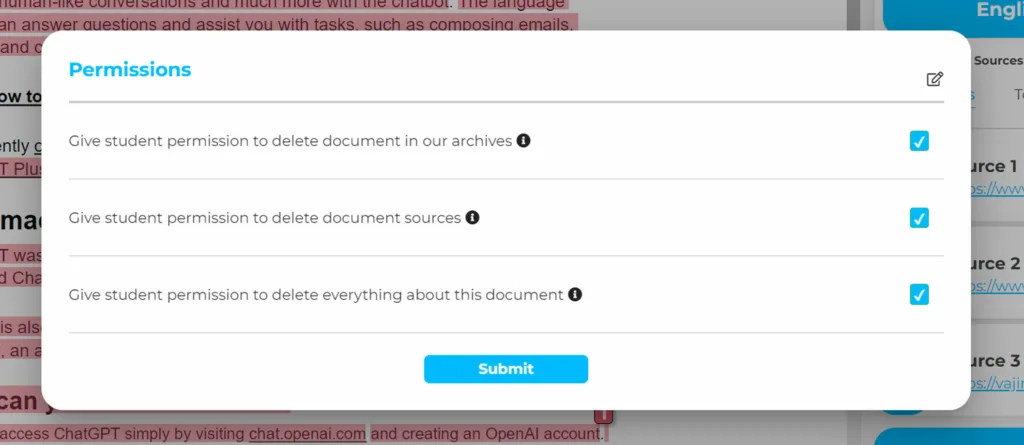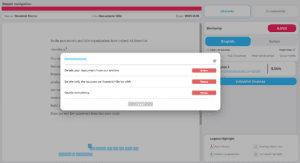
For nearly 25 years, Inspera has developed an effective ecosystem for digital assessments at every stage of education. As Head of Originality and Integrity Solutions and former CEO of Crossplag, I have immersed myself in what it means to claim your own work and how to protect it.
Rapid technological advancement astonishes us daily, particularly with the arrival of AI. With these advancements, academic integrity is vital in maintaining the credibility and authenticity of academic work, now more than ever. It is crucial to ensure that AI is used as a catalyst for creativity rather than automating the writing or creation process.
As AI continues to reshape our world, upholding these values is essential in nurturing a culture of trust and ethics in both academic and professional realms. This is why Inspera is currently piloting both similarity detection and AI detection in digital assessment.
How Inspera is Working to Maintain Academic Integrity
This is specifically where Inspera Originality comes in. This is a cutting-edge solution tailored to meet the growing need of maintaining academic integrity through a holistic approach in three steps:
- Multilingual similarity detection
- Translation similarity detection
- AI Authorship detection
Understanding the diverse language landscape of global academia, our solution is equipped with robust multilingual detection capabilities across more than 30 languages. In addition to detecting similarities within the same language, our system also has the ability to analyze texts that have been translated, identifying instances where translated material is falsely presented as original content. Originality translation capabilities are supported for more than 100 language pairs.
Vast Data
The importance of data in originality lies in the ability of training algorithms to recognize patterns and footprints of AI-generated content more accurately, thus helping in improving the AI detection process significantly. Additionally, broader data sets are crucial to improving the similarity detection performance as documents are checked against a larger number of documents, resulting in more accurate similarity detection.
Data Usage
Proper data usage directly influences the accuracy and effectiveness of originality checking and enhances the process significantly. And the weight of that sentence lies in the words of “proper data usage.”
While data usage for enhancement purposes is a cornerstone process, there is a more fundamental principle at play – data privacy and access. Regardless of the usability and the enhanced originality checking process, data privacy and access should always take precedence.
Full Control
This is why we designed Inspera Originality to allow institutions to have full control over their data. This starts with choosing what kind of data to store and continues up to how that data is used. Institutions can opt-in to have a very nuanced way of having their data accessed, ranging from having their data is completely open to being completely closed and every shade between.
If an institution doesn’t want to share any of its data, its repository will remain out of reach from other institutions. Their submissions will not be checked against other institutions, nor will their data be used for AI detector enhancement processing.
Should an institution consent to have their submissions checked for similarities from other institutions, their repository will be available in the same way. We strictly adhere to a policy of not using any data unless we have received clear and explicit consent from the institution.
After the institution has chosen the level of consent on data access upon the migration of historical data, each submission uploaded will be owned by the institution and the student/writer as well.
Collaborative Integrity – Sharing Data Responsibly


We understand the need for data sharing among institutions. That’s why we have provided the option to open data for collaboration with other institutions. This ensures mutual data access, where both institutions can share and access each other’s data, thus improving the similarity detection process as the submissions can be compared to a broader range of sources.
By sharing consented data, institutions can gain a more comprehensive view of the trends in academic integrity. You can identify what measures are most effective in promoting academic integrity, leading to the development of best practices for your institution.
Needless to say, the decision to share data rests entirely with the institution itself, and no data is exchanged without explicit consent. Each institution retains full control over its own information, guaranteeing that data sharing aligns with the institution’s policies and the ethical standards it upholds.
Respecting User Privacy and Control
Enabling individual users to delete their own documents has been one of our main focuses. We understand that the writer who produced the document should have the right to decide what happens with it and should have the right to delete it on demand.
With that in mind, we’ve designed the interface so the institution – namely the educator or the administrator – can grant permission to the student to manage this. They can then delete either the document from our archives or the sources where the similarities were found or delete everything in one single click.
By giving the administrator this power, it ensures mutual agreement between the student and the institution.
How to Delete Documents From the Repository
In order for the student to delete the request, first, the educator or administrator is required to give the proper permissions to do so, as seen in the screenshot below.


After this, the prompt is displayed with three possible permissions to give to the student:
- Allowing the student to delete the document from our archives
- Allowing the student to delete the sources where similarities were found
- Allowing the student to delete everything about this document
This allows the administrator to be in the loop on what has happened to certain documents and also protects the student’s work.
What Writers See
From the student or writer’s perspective, should they require deletion and the administrator has granted them permission to do so, they are met with the following screen:


They can then either delete the document from our archive, delete the sources where similarities were found, or delete everything. This function enhances the data privacy and rights that every institution should have on similar platforms.
Everything deleted is permanent, and after deletion, there is no process to retrieve the deleted documents as we don’t store copies or anything similar.
Be Among the First to Try Inspera Originality
Inspera Originality is currently being piloted by both existing Inspera partners and institutions we haven’t previously worked with, at no cost. We’re doing this not just to test the platform, but because we are confident that it will revolutionize academic originality. And, in line with our commitment to data privacy, we will clean all the data processed for the pilot at the end. Interested?


